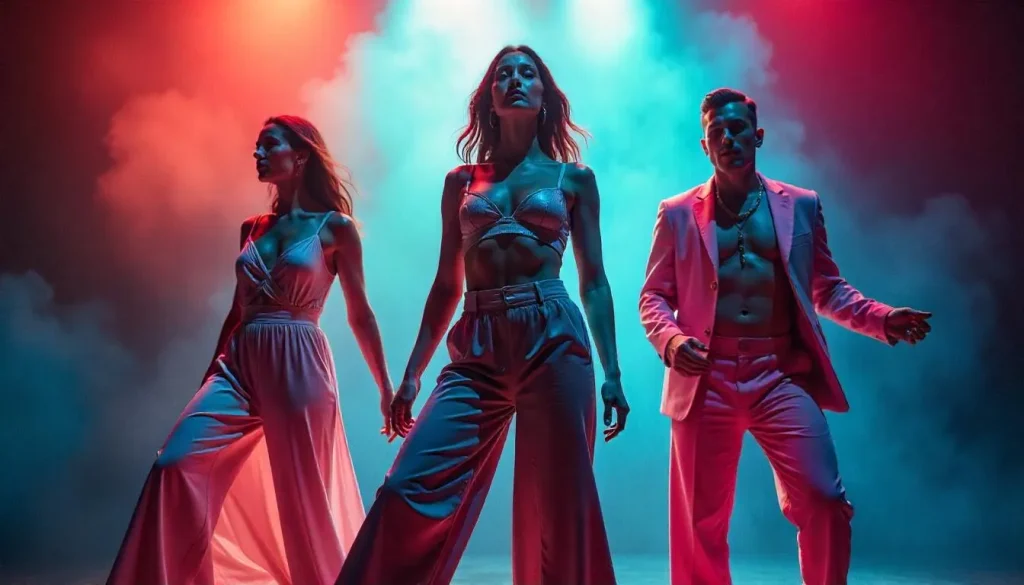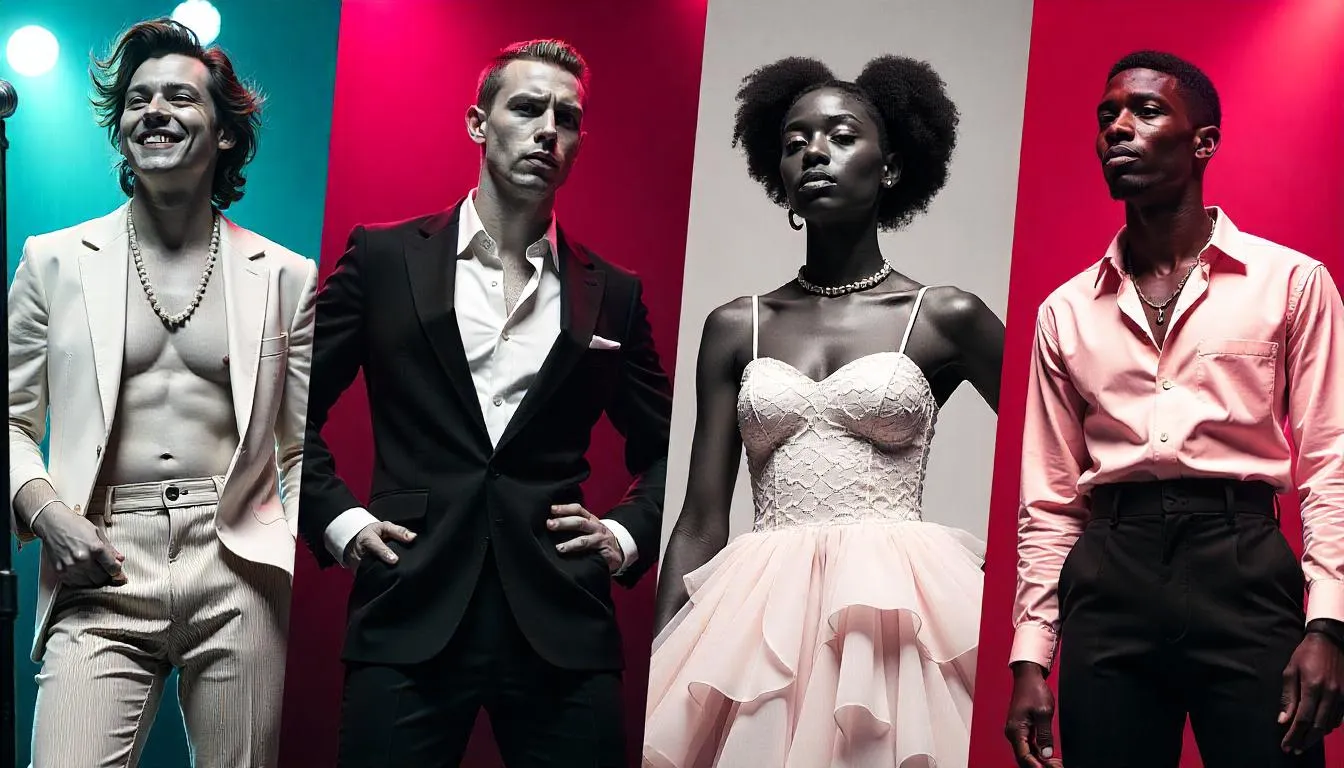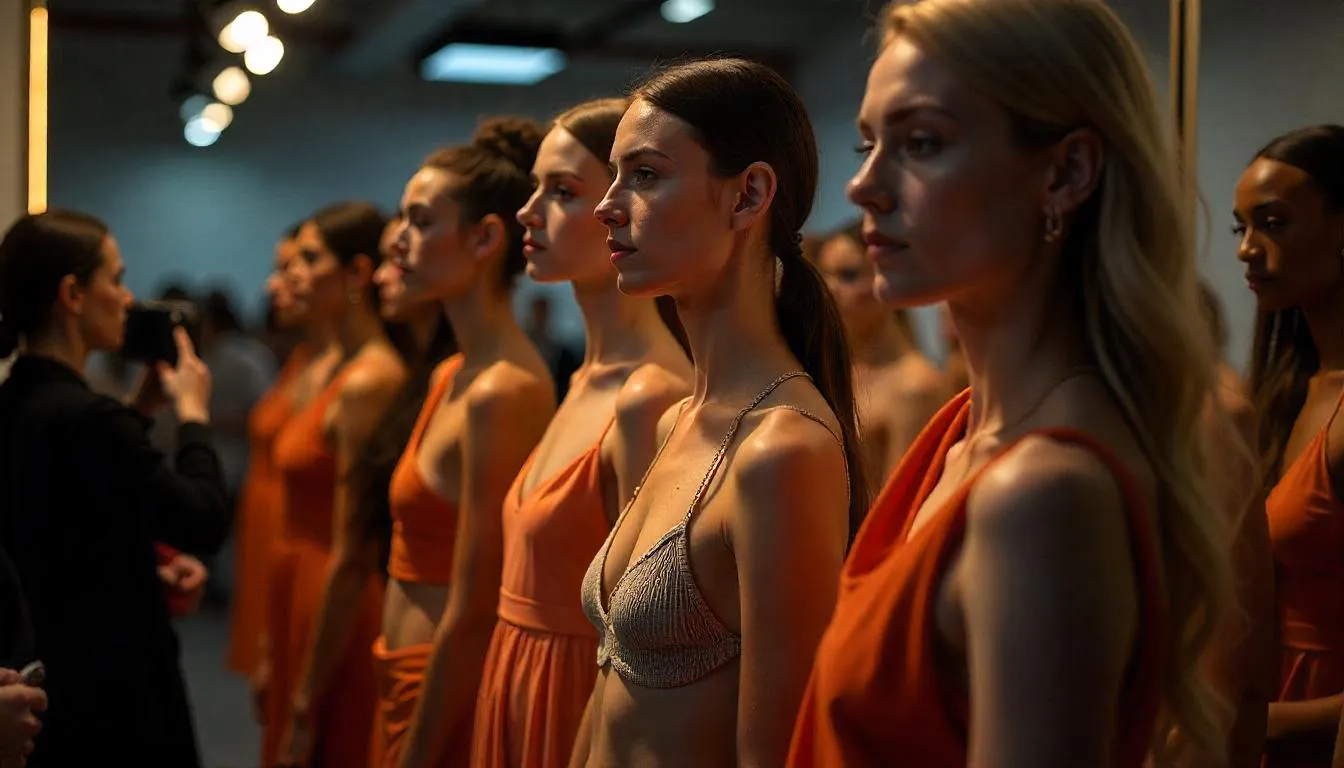Breaking Barriers: How Stage Performers are Revolutionizing Gender Neutral Fashion and Redefining Style Boundaries
The spotlight has never been brighter on artists who dare to challenge fashion’s most deeply entrenched conventions. From Billy Porter’s show-stopping tuxedo gown at the 2019 Oscars to Harry Styles’ pearl-adorned ensembles, performers across the globe are dismantling traditional gender binaries through their bold sartorial choices. This transformative movement isn’t just about clothing—it’s a powerful cultural shift that’s rewriting the rules of self-expression and authenticity on the world’s biggest stages.
As we witness this fashion revolution unfold, one thing becomes crystal clear: the future of style is fluid, inclusive, and utterly fearless. Artists are no longer confined by outdated notions of what they “should” wear based on their gender identity. Instead, they’re creating a new language of fashion that speaks to individuality, creativity, and the boundless spectrum of human expression.

The Rise of Androgynous Fashion in Performance Culture
The emergence of gender fluid style in performance spaces represents more than a fleeting trend—it’s a seismic cultural shift that’s reshaping how we perceive identity and self-expression. Harry Styles often incorporates traditionally feminine elements into his outfits, such as dresses, skirts, and pearls, making him a prominent figure in genderless fashion. His fearless approach has inspired countless artists to explore the full spectrum of fashion without constraints.
Performance stages have become laboratories for gender expression, where artists experiment with silhouettes, textures, and styles that transcend traditional boundaries. FKA Twigs exemplifies this approach—every look is drastically different from the last, but one thing remains constant: she will not conform to any rules, creating an otherworldly style both on and off stage.
This movement extends far beyond Western culture. In countries like Japan and China, genderless fashion has been established for years, with brands like Comme des Garçons and Yohji Yamamoto pioneering this area since 2016. The global nature of this shift demonstrates that the desire for authentic self-expression through fashion is universal.
Pioneering Artists Leading the Gender Neutral Revolution
Billy Porter: The Trailblazing Icon
Billy Porter and countless other Black men have been setting trends before men in dresses became mainstream, with the Pose star changing how the world sees men and fashion. Porter’s impact extends far beyond individual red carpet moments—he’s systematically challenging the fashion industry’s most rigid conventions.
Porter’s red-carpet appearances seamlessly blend traditional male and female fashion elements, challenging gender norms and celebrating individuality, with his 2019 Oscars tuxedo gown becoming a cultural milestone. His approach demonstrates that fashion can be both a personal statement and a powerful tool for social change.
Hip-Hop’s Gender Fluid Pioneer: Young Thug
The hip-hop world has witnessed its own fashion revolutionary in Young Thug, who boldly stated his preference for women’s clothing. “Ninety percent of my clothes are women’s,” he told GQ. “Because women’s clothes are [slimmer] than men’s clothes. The jeans I got on right now, they’re women’s jeans.” This candid admission from a street rapper represents a significant shift in hip-hop culture, traditionally known for its rigid masculinity standards.
The Next Generation of Style Rebels
Jaden Smith made headlines as the face of Louis Vuitton’s SS16 campaign for womenswear, posing with three female models and even appearing in a Vogue Korea shoot. These young artists are normalizing gender fluid expression for their generation, creating space for authentic self-expression without apology.
Breaking Down Fashion’s Traditional Barriers
The Evolution of Stage Costumes
Stage fashion has always been a realm of heightened expression, but today’s performers are using their platforms to challenge societal norms rather than simply entertaining. The traditional binary of “men’s” and “women’s” stage costumes is dissolving, replaced by a more inclusive approach that prioritizes artistic vision over gender expectations.
This shift reflects broader changes in how society understands gender identity. Performers are no longer content to wear costumes that contradict their authentic selves or artistic vision. Instead, they’re demanding—and creating—fashion that reflects the full spectrum of human expression.

The Role of Fashion Designers in This Movement
On recent runways, designers including Tanner Fletcher and Christian Siriano found ways to celebrate gender fluidity. These forward-thinking designers are creating collections that serve artists who refuse to be constrained by traditional gender norms.
However, the journey hasn’t been without challenges. Billy Porter struggled to find a designer who was willing to create his gender-fluid outfit for the 2019 Academy Awards. This resistance highlights the ongoing need for more inclusive approaches in the fashion industry.
Key Trends Shaping Genderless Stage Fashion
Fluid Silhouettes and Versatile Designs
Fluid silhouettes have emerged as a prominent gender-neutral trend, with loose-fitting garments such as oversized blazers, flowy dresses, and wide-leg pants gaining popularity among people of all genders, encouraging freedom of movement and offering a fresh take on modern style.
Boundary-Breaking Accessories and Details
Modern performers are embracing accessories traditionally associated with different genders—pearls, statement jewelry, flowing fabrics, and bold makeup choices that complement their artistic vision rather than conforming to gender expectations. These details serve as powerful symbols of personal authenticity and creative freedom.
Sustainable and Ethical Fashion Choices
Many gender-neutral fashion advocates also champion sustainability, viewing inclusive fashion as part of a broader movement toward ethical consumption. This dual focus on social and environmental responsibility reflects the values of many contemporary performers and their audiences.
The Cultural Impact Beyond the Stage
Influencing Mainstream Fashion Trends
The bold choices made by stage performers don’t stay confined to concert halls and red carpets. These artistic expressions filter into mainstream fashion, influencing designers, retailers, and consumers who seek more inclusive options in their daily wardrobes.
Challenging Industry Standards
Marginalized members of the LGBT community were pushing the binaries of gender fashion long before celebrities moved in. This acknowledgment highlights how stage performers are amplifying existing movements rather than creating entirely new ones, giving voice to communities that have long challenged fashion norms.
Creating Safe Spaces for Expression
When high-profile performers embrace gender fluid fashion, they create visibility and validation for countless individuals who share similar experiences. These public displays of authentic self-expression provide powerful examples of living without conforming to restrictive social expectations.
Current Market Trends and Consumer Response
The fashion industry is responding to this cultural shift with increasing numbers of gender-neutral collections and marketing campaigns. The fashion industry continues to evolve in 2024, breaking barriers and redefining norms, with genderless fashion challenging traditional notions of clothing designed for specific genders through an inclusive approach that fosters diversity.
Retailers are recognizing the commercial potential of inclusive fashion, with many launching dedicated gender-neutral lines or reorganizing their stores to move away from traditional binary sections. This shift represents both social progress and smart business strategy, as consumers increasingly seek brands that align with their values.

Overcoming Industry Resistance and Social Backlash
Navigating Conservative Pushback
Artists who challenge gender norms through fashion often face criticism from conservative audiences and media outlets. However, many performers view this resistance as confirmation that their message is powerful and necessary. By maintaining their authentic style choices despite backlash, they demonstrate the importance of standing firm in one’s convictions.
Building Support Networks
The growing community of gender-fluid fashion advocates in the entertainment industry provides mutual support and encouragement. This network helps normalize diverse expressions of style and creates safety in numbers for artists taking fashion risks.
The Future of Gender Neutral Performance Fashion
Emerging Technologies and Materials
Innovation in fashion technology is creating new possibilities for gender-neutral design. Smart fabrics, 3D printing, and sustainable materials are opening doors for designers to create truly inclusive pieces that adapt to different body types and style preferences without conforming to traditional gender categories.
Global Cultural Integration
As international performers continue to challenge Western fashion norms, we’re seeing increased integration of diverse cultural expressions of gender and style. This global perspective enriches the conversation around inclusive fashion and demonstrates that gender fluidity exists across all cultures and traditions.
Educational Initiatives and Awareness
Fashion schools and industry organizations are increasingly incorporating discussions of inclusive design into their curricula. This educational focus ensures that future designers and industry professionals are equipped to create and promote gender-neutral fashion options.
Practical Impact on Costume Design and Stage Production
The shift toward genderless fashion is transforming how costume designers approach their craft. Traditional costume departments organized by gender are evolving into more fluid systems that prioritize character needs and artistic vision over binary categories. This change requires new approaches to sizing, fit, and design that accommodate diverse body types and style preferences.
Production companies are also adapting their wardrobe budgets and sourcing strategies to support artists who choose non-traditional costume approaches. This practical adaptation demonstrates the industry’s recognition that inclusive fashion is not just a trend but a fundamental shift in how performance art is created and presented.
Frequently Asked Questions
Fashion as a Force for Cultural Evolution
The movement toward genderless fashion on stage represents far more than a style trend—it’s a powerful statement about authenticity, inclusion, and the right to self-expression. As performers continue to challenge traditional norms through their bold fashion choices, they’re creating space for countless individuals to embrace their own authentic style without fear or restriction.
This cultural shift is reshaping not only the fashion industry but also our broader understanding of gender, identity, and creative expression. By supporting artists who choose to express themselves authentically through fashion, we participate in a movement that values diversity, creativity, and the fundamental human right to be seen and accepted as we truly are.
The stage has always been a place where transformation occurs, but today’s performers are transforming more than just their appearance—they’re transforming society’s understanding of what it means to dress with authenticity and purpose. As this movement continues to evolve, one thing remains certain: the future of fashion is as limitless and diverse as the artists who dare to redefine it.